Pro Tour Coverage, Prices and You
We are less than a week away from Pro Tour Shadows over Innistrad, an event that promises to give us a very exciting weekend of Magic featuring some sweet new cards. Rotational Pro Tours are the best, since the format is fresh, and even though White/x Humans seem like the deck to beat, the possibilities are endless. That said, I don't want to spend too much time talking about the awesomeness that is the Pro Tour. Instead I want to focus on one very specific aspect of the Pro Tour, the coverage of the event and how it impacts card prices.
It isn't a secret that cards that perform well at the Pro Tour, especially cards from the newest set, will spike in price. However, we tend to look at these price increases in an overly broad manner, which makes these events less useful. Along with talking about how much the Pro Tour impacts prices, I also want to talk about the the specifics of why the Pro Tour impacts prices. So let's jump right in, because we have a lot to cover.
One quick note. Since I'm mostly interested in how Pro Tours impact prices, we are going to be focused mostly on Standard Pro Tours for the rest of this article. While Modern Pro Tours are fun to watch and do have an impact on card prices, it's rarer for new cards to make a big enough impact on the format to have meaningful price spikes.
Pro Tour Top 8's
A year ago I wrote an article about quantifying the price impact of a Pro Tour Top Eight. The bottom line is that, for Mythics from the newest set, making the Top 8 of a Pro Tour generally increases a card's price by about 50%. Rares from the newest set that Top 8 increase by about 100%. Of course, many of these gains are short lived, lasting from a couple weeks to a couple months, but this fleetingness isn't that important if you sell the cards right away. However, since the original article was written over a year ago, it doesn't include the three most recent Standard Pro Tours, so let's update.
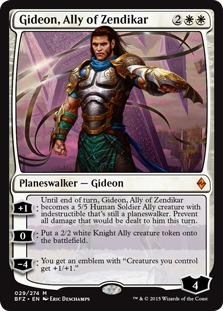
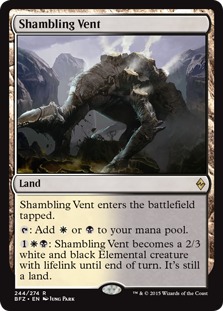

Pro Tour Battle for Zendikar was easy to analyze since Battle for Zendikar had very little impact on the format. The only Mythic to make an impact was Gideon, Ally of Zendikar, which increased 20% as a result of the Pro Tour. However, if you look a bit deeper at the numbers, Gideon, Ally of Zendikar started out at about $20 and spiked to $42, which represents a 110% increases from pre-order prices. The only other Battle for Zendikar Rares to make the Top 8 were various lands, which complicates our analysis. The thing about lands is they almost always start off overpriced, and while some of the Battle for Zendikar lands (Shambling Vents and Sunken Hollow) saw an increase in the 25% range, many of them were at their peak price during presales. Don't expect big things from the shadowlands, even though you'll likely see them a lot during the Top 8 at Pro Tour Shadows over Innistrad.
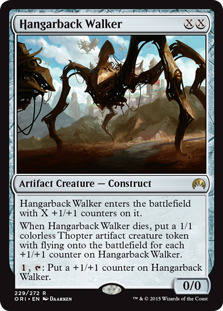
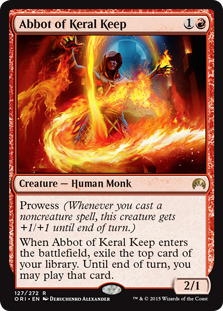

Pro Tour Magic Origins saw three Rares from Magic Origins dominate the Top 8. First we have Hangarback Walker, which had one of the biggest Pro Tour price spikes in recent memory. Starting off a $2.20 when Magic Origins released, by the time Pro Tour Magic Origins came to an end, with UR Ensoul Artifact being the best deck at the tournament (even though it didn't win the title), the little artifact was sitting at $18.90, a 759% increase. The other two breakout Rares were Abbot of Keral Keep and Exquisite Firecraft, which were aided by the fact that Mono-Red was the deck most represented in the Top 8. As a result, Abbot of Keral Keep shot up from $3.30 to $9.90, an increase of 200%, while Exquisite Firecraft went from $4.00 to $9.70, a jump of 142%.


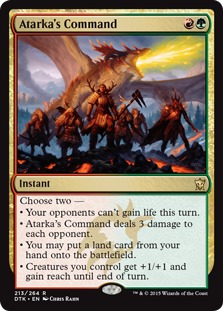
I'm sure you can see the pattern by now, so I'm going to keep the Pro Tour Dragons of Tarkir discussion brief. Icefall Regent shot up 246%, Dragonlord Silumgar 148%, Dragonlord Atarka 216%, Surrak, the Huntcaller 216%, and Dragonlord Ojutai 46%. All around, these numbers are staggering, with the percent gains far higher than the 50% for Mythics and 100% for Rares that I found in my original article. It is likely aided by the fact that Dragons of Tarkir was massively under priced during presales, perhaps due to the stereotype that Dragons are casual cards, not constructed staples.
If anything, my original article underestimated the impact that a Pro Tour Top 8 has on the price of cards. Of the three most recent Standard Pro Tours, making the Top 8 increases the value of a Rare (discounting Rare lands) by 312% and of Mythics by 130%. Obviously, if you can pick cards from the most recent set that make the Top 8 of a Pro Tour, you stand to make yourself quite a bit of money, or at least save yourself quite a bit of money since you won't have to by your copies at the higher price point. The question now is why?
Why Do Pro Tour Top 8's Increase Prices so Much?
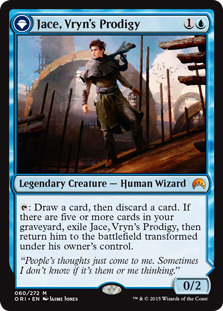
Let's look a little bit deeper at Pro Tour Magic Origins, and specifically at Jace, Vryn's Prodigy. Today, Jace, Vryn's Prodigy is widely held to be the best card in Standard and among the best planeswalkers ever printed, which is backed up by his massive $85 price tag. However, back in the first weeks of Magic Origins, the reviews of Jace, Vryn's Prodigy were decidedly mixed.
If you really dig into the numbers at Pro Tour Magic Origins, you'll see that Jace, Vryn's Prodigy was one of the most important cards from the set. It was a four of in nine of the top performing Standard decks at the tournament. In fact, there were more copies of Jace, Vryn's Prodigy at the top tables of Pro Tour Magic Origins than there were copies of Dragonlord Silumgar or Icefall Regent at Pro Tour Dragons of Tarkir, yet Jace, Vryn's Prodigy increased a miniscule 38%, while other cards jumped 100, 200, or even 700%. How can this be?
Part of the answer is Jace, Vryn's Prodigy didn't make the Top 8, while Icefall Regent and Dragonlord Silumgar did, but the deeper answer is a bit more complex. Why is the Top 8 so important? Well, there are a few reasons, but one of the big ones is because it guarantees five-game matches of video coverage, and video coverage is extremely important to the price of cards.
Pro Tour Magic Origins Video Coverage
Looking back at the video feature matches at Pro Tour Magic Origins is very telling and helps explain why Jace, Vryn's Prodigy didn't benefit from the Pro Tour and while some other cards did. Going back over the coverage archives, I count three times over the entire three days of coverage that Jace, Vryn's Prodigy decks were video features. Interestingly, Wizards started off with a bit of a Jace, Vryn's Prodigy narrative, featuring Jace decks in the first two constructed rounds of day one, but after that, Jace, Vryn's Prodigy disappeared completely from coverage, showing up only once in day two in Cuneo's UR Tutelage deck, which got about 5 minutes of camera time while being absolutely crushed by UR Ensoul Artifact.
Note: I didn't watch every feature match for this article. I went by the decks listed as being featured, which doesn't fully account for back-up feature matches that get a small amount of camera time.
On the other hand, UR Ensoul Artifact, featuring the tournaments biggest winner Hangarback Walker, was on camera in seven different matches over the course of the tournament, trumped only by Red-Deck Wins. Abbot of Keral Keep and Exquisite Firecraft were featured a massive 17 times at Pro Tour Magic Origins. As such, it might not be so much that cards in the Top 8 spike, but cards that get a lot of video coverage spike, and making the Top 8 simply increases the amount of video coverage a card/decks gets, sometimes by magnitudes.
Another interesting comparison is Rally the Ancestors, a card that did not make the Top 8 of Pro Tour Magic Origins, but was a major part of the narrative from start to finish. All things told, Rally the Ancestors decks were featured about twice as often as Jace, Vryn's Prodigy decks and were a much bigger part of the narrative, and as a result Rally the Ancestors spiked from a bulk Rare to over $3, even without making a Top 8.
Example: Ojutai vs Silumgar - The Power of Video Coverage


At Pro Tour Dragons of Tarkir, Dragonlord Silumgar increased about 150%, while Dragonlord Ojutai only increased about 40%, despite the fact that both cards were present in the Esper Dragons list that made the Top 8. Why is it that Dragonlord Silumgar increased nearly four times as much as Dragonlord Ojutai, despite the fact that if you look at the tournament result you'll see that Dragonlord Ojutai saw four or five times more play in top performing decks than Dragonlord Silumgar? The answer is the total amount of video coverage and a very vivid, memorable event.
Let's start by talking about total video coverage, which includes not only the Top 8, but the rest of the tournament as well. By my count, Dragonlord Silumgar was featured at least twice as much as Dragonlord Ojutai, even though Dragonlord Ojutai was seeing five times more play. Not only was UB Control featured more than Esper Dragons throughout the course of the tournament, but Dragonlord Silumgar benefited greatly from making it all the way to the finals, while the Dragonlord Ojutai deck bowed out in the first round of the Top 8. In this instance video coverage is deceiving. If you watched the event, you'd think that Dragonlord Silumgar was clearly the more played and more important card, and you might be tempted to pick up some copies for yourself, which many people did, causing the price to spike. On the other hand, Dragonlord Ojutai flew under the radar because of the lack of camera time.
Not only did Dragonlord Silumgar get more camera time, but he got more good camera time. Research into marketing shows that "good" commercials (ones that are likable and visually appealing) can triple sale. On the other hand, "weak" commercial actually cut purchase rates by half (check out Age of Propaganda by Anthony Pratkanis). This same idea applies to Dragonlord Silumgar. While he really didn't see all that much play (at least not as much as the video coverage would suggest), he did have the highlight of the entire event.
By all meaningful statistics, Dragonlord Ojutai was the better Dragon. Yet it was Dragonlord Silumgar that saw the huge price spike, not just because it was featured more often, but because it created the awesome, highly memorable event in the video. You have LSV laughing and cracking jokes, you have Dragons stealing Dragons and killing Dragons, and in the end Dragonlord Silumgar winning a game in the semifinals of Pro Tour Dragons of Tarkir. It's these type of moments that make people want to play Magic. Sure, Dragonlord Ojutai won a bunch of (off camera) games, but it didn't steal two Dragonlord Atarka's in 10 seconds to put its pilot into the finals of a Pro Tour.
As such, getting a huge bump in screen time is one of the main benefits of making the Top 8 of a Pro Tour, not only because we see more of the card, but because it gives the card opportunities for vivid moments and these moments happen while the entire Magic world is watching. At the same time, screen time is important even for decks that don't make the Top 8. While I'm sure there is a ton more research that could be done on this topic, hopefully this discussion provides a jumping off point. My guess is the amount of video feature matches a deck/card gets is closely associated with how much the price of the deck/card increases. Getting a huge blast of video coverage isn't the only reason why making a Top 8 spikes card prices. Another reason is the way people (wrongly) evaluate tournament results.
Why the Top 8?
Because of the way Magic tournaments are set up, where the Top 8 players make it to the "final table," casual observers associate Top 8's with good/successful decks and cards. While this observation is true to some extent, looking at just the Top 8 is a horrible way to discover the best decks and best cards in any tournament.
Part of the problem is the Magic media, including the mothership itself. Let's say you were out of town and couldn't watch a Pro Tour. Even more likely you're in the majority of Magic players who love the game, but don't want to dedicate their entire weekend to watching a Twitch stream. You wake up the Monday after the Pro Tour and decided you want to catch up on what happened. So you head over to Google and type in "Pro Tour Battle for Zendikar Decks." What do you think you'll find? The first two search results are from the mothership, one showing the Top 8 decks and another leading to the tournament page, where the first link you'll find is to the Top 8 decks. Also on the first page of the results you'll find a couple articles breaking down the Top 8 decks, video coverage of the Top 8, and a MTGSalvation tournament page heavily focused on the Top 8. In fact, somewhere between 60 and 70% of the top search results are focused exclusively on the Top 8 of the event. As such, if you are one of the millions of Magic players who like Magic enough to look up tournament results after the fact, odds are the only (or at least the primary) information you'll have about the event is the Top 8 decks.
So why is this a problem? Well, the Top 8 is a super arbitrary and silly way to measure the success and power-level of a deck. In a Pro Tour, the different between a deck showing up in the Top 8 (and getting tons of coverage) and ending up somewhere between 9th and 32nd is usually one match out of the entire 16 round tournament. You could even argue that the difference is even less than that — one topdeck perhaps, one too many lands, one timely Sorin, Grim Nemesis peeled by an opponent. That is the difference between hours and hours of video coverage, and seeing your deck not only miss out on the video coverage, but (mostly) fall off the front page of Google.
For a Pro Tour, it's even worse than that. The best constructed decks aren't guaranteed to make the Top 8 thanks to the split format. At Pro Tour Magic Origins, the players in the Top 8 had an average of 1.65 losses in Standard, including one player who was 7-3 and four who were 8-2-1. Some likely would have ended up 7-3 if was not for intentional draws. On the other hand, if you look at players' records in constructed, you'll see there were five players with 9 wins and more than twenty players with 8 wins. As such, most of the Top 8 competitors at Pro Tour Magic Origins wouldn't have made the Top 8 if the event was based on constructed records alone.
Summary
- Making the Top 8 of a Pro Tour increases the price of a Rare from the newest set by between 100 and 200% and the price of a Mythic by between 50 and 100%.
- If anything, the amount a card spikes as a result of a Pro Tour Top 8 has increased over the past few Pro Tours.
- The biggest reason for the spike is the amount of video coverage cards in a Top 8 get.
- Video coverage in general matters. There are several examples of how getting heavy video coverage outside of the Top 8 (especially on day two) can increase the price of a card significantly.
- The other major reason cards that make a Top 8 increase in price so drastically is because the Magic media and Magic players are overly focused on the Top 8.
Putting this Info into Practice
Now, I hear you saying, "Sure, the facts and reasons why making the Top 8 spikes card prices is interesting, but how does this lesson matter to me?" Here are a few answers.
#1: Don't Be Fooled by Day One Coverage - If you analyzes the type of matches Wizards chooses to feature at Pro Tours, you'll see they are fairly predictable. The first two or three constructed rounds on day one almost always feature crazy decks. That is where we get Jeskai Ascendency Combo, Chromanti-flayer, and other crazy brews. Then, after most of the fringe decks fall by the wayside, the rest of day one features either players who are doing extremely well (i.e. undefeated) or players who are fighting for day two. As a result, the percentage of decks that get a feature match on day one which actually end up in the Top 8 is quite small. The poor conversion rate means that day one video coverage isn't all that valuable or predictive of price spikes.
However, there is one big exception. Wizards loves to feature well-know players and teams, and since players are often well-known because they are good, using day one video coverage to figure out what deck some of the large teams are playing and buying cards from those decks is a legitimate strategy. Maybe you see LSV playing UR Ensoul Artifact on day one. Is LSV going to make the Top 8? Most likely not (no dig intended, just by the numbers). However, the odds of someone playing the Team ChannelFireball deck making the Top 8 is actually quite high. Plus, even if they don't make the Top 8, you know that Team ChannelFireball members are more likely to get feature matches than unknown players, everything else equal. As such, if you can figure out what deck the big teams are on early, you can hedge your bet based on the day one video coverage.
#2: Look Beyond the Top 8 - Looking at the Top 8 decks and buying key cards is great. The problem is everyone is looking at the Top 8 decks and buying the key cards, which means you have to be a very fast clicker and hope that whoever you buy the cards from actually ships your order. On the other hand, I would argue that the spike of a card like Dragonlord Ojutai (from $19 to $33), which happened a couple weeks after Pro Tour Dragons of Tarkir and the spike of Jace, Vryn's Prodigy (from $30 to $40 a few weeks after Pro Tour Magic Origins, than from $40 to $70 a month after that) were fairly predictable to anyone analyzing the best performing decks of the tournament as a whole, rather that focusing narrowly on the Top 8. Plus, with these cards, there's less competition. There's no need for rapid-fire clicking and you are almost assured your order will be shipped. So instead of just rushing to buy the cards that show up on camera in the Top 8, look beyond the Top 8 where much of the true value lies.
#3: Pay Attention to Vivid Moments - This might sound strange, but look for highlight reel plays throughout the tournament. When you see something crazy happen, and it involves a new Rare or Mythic, there's a good chance the price will increase, regardless of anything else. Reanimating 15 creatures with Rally the Ancestors is going to sell copies of Rally the Ancestors, even if Rally the Ancestors isn't all that good. So keep an eye out for "wow" moments, and the cards that are involved in those moments, since being cool on camera is often enough to get a card to spike, even without a good finish to back it up.
Conclusion
Anyway, that's all for today. As always, leave your thoughts, ideas, opinions and suggestions in the comments, and you can reach me on Twitter @SaffronOlive, or at SaffronOlive@MTGGoldfish.com













